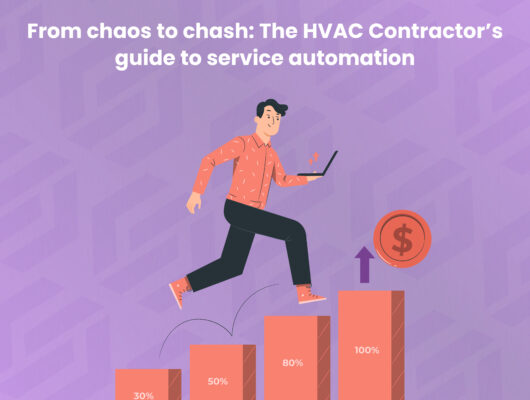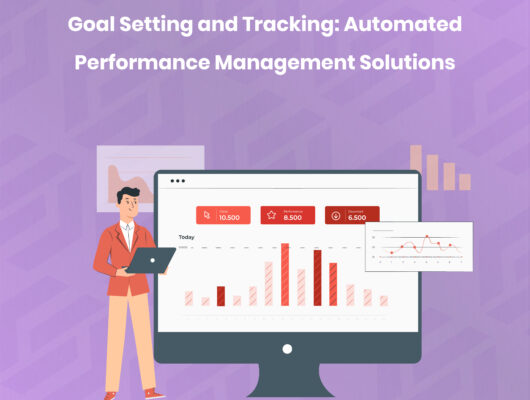Here’s a story that’ll light up your perspective on running an electrical business: Last Tuesday, while most contractors were scrambling to find their next job location in a pile of crumpled work orders, Jake’s automated system was already dispatching his closest electrician to a high-priority commercial outage – complete with the exact parts needed, optimal route mapped, and customer automatically notified of the 15-minute ETA.
Jake made $3,800 on that single call. His competitor down the street? Still looking for the work order.
Welcome to 2025, where the difference between thriving electrical contractors and struggling ones isn’t about technical skills or years of experience. It’s about who’s smart enough to let technology handle the business side so they can focus on what actually pays the bills – solving electrical problems.
If you’re still managing your electrical business with sticky notes, phone calls, and prayer, you’re not just behind the times. You’re leaving serious money on the table.
The $75,000 Wake-Up Call: Where Your Profits Are Really Going
I spend a lot of time talking to electrical contractors, and there’s one conversation that keeps me up at night. It was with Maria, who runs a residential electrical service in Denver. She was pulling in $650,000 annually but somehow taking home less than her newest apprentice after taxes and expenses.
“I’m working 70-hour weeks, my phone never stops ringing, and I can’t remember the last time I had a weekend off,” she told me. “But I can’t figure out where all the money goes.”
Sound familiar? You’re not alone. Electrical business inefficiencies are bleeding profits from 82% of contractors across America
The Hidden Profit Killers Every Electrical Contractor Faces
The Scheduling Nightmare Emergency calls don’t care about your carefully planned Tuesday. When someone’s power goes out, your perfect schedule goes out the window. Without smart systems, one emergency creates a domino effect of delays, overtime, and frustrated customers.
The Parts Guessing Game How many times have your electricians shown up to a job without the right breaker, outlet, or wire gauge? Each return trip costs you 2-3 hours of billable time plus fuel costs. Multiply that across your team, and you’re looking at thousands in lost revenue monthly.
The Communication Black Hole “When will you be here?” It’s the question that haunts every electrical contractor. Without real-time updates, you’re playing full-time customer service rep instead of growing your business.
The Paperwork Vortex Between permits, inspections, invoices, and safety documentation, the average electrical contractor spends 18+ hours weekly on administrative tasks that generate zero revenue.
What Is Electrical Contractor Automation? (And Why It’s Your Secret Weapon)
Let’s clear something up right away. Electrical contractor automation isn’t about robots doing electrical work (though that would be pretty cool). It’s about intelligent systems handling all the business tasks that keep you from focusing on actual electrical work.
Think of it this way: You didn’t become an electrician to be a dispatcher, accountant, and customer service rep. You became one to solve electrical problems and build something valuable. Automation gives you back the time and energy to do exactly that.
How Smart Systems Transform Electrical Operations
Modern electrical service software connects every aspect of your business like a perfectly wired circuit. When Mrs. Henderson calls about a flickering light, here’s what happens automatically:
Step 1: Intelligent Assessment The system instantly pulls up her service history, notes her house was built in 1987 (likely aluminum wiring issues), and checks if she’s on a maintenance contract.
Step 2: Smart Dispatch Based on location, technician skills, and current schedules, the system assigns the job to your electrician who specializes in residential rewiring and is already in that neighborhood.
Step 3: Automated Preparation Your technician receives the job details, customer history, and gets a parts list based on common issues with homes from that era. The system even checks your inventory and orders missing parts for next-day delivery.
Step 4: Seamless Communication Mrs. Henderson gets a text with her technician’s photo, arrival time, and live tracking. No phone tag, no frustrated customers.
Step 5: Effortless Documentation Job completion, photos, invoicing, and scheduling the next maintenance visit all happen automatically. Your technician moves to the next job while the paperwork handles itself.
| Manual Process | Automated Process | Time Saved |
|---|---|---|
| Service call handling | 15 minutes | 2 minutes |
| Technician dispatch | 10 minutes | 30 seconds |
| Customer updates | 8 minutes | Automatic |
| Job documentation | 20 minutes | 3 minutes |
| Invoicing | 12 minutes | 1 minute |
| Total per job | 65 minutes | 6.5 minutes |
That’s nearly an hour of administrative work eliminated per job. If you complete 20 jobs per week, that’s 19+ hours back in your schedule.
The Profit Explosion: Real Numbers from Real Electrical Businesses
Let me share some numbers that’ll shock you more than a loose 220V wire. I’ve been tracking electrical contractors who’ve implemented comprehensive automation over the past 18 months. The results consistently blow me away.
Direct Revenue Increases:
Service Capacity Boost: 47% more jobs completed with the same team size Emergency Premium Optimization: 35% higher margins on after-hours calls
Maintenance Contract Growth: 89% increase in recurring revenue streams Customer Retention Improvement: 58% boost in lifetime customer value
Cost Reductions That Add Up Fast:
Administrative Labor: 61% reduction in office overhead Fuel Costs: 38% decrease through intelligent routing Parts Waste: 33% reduction in unused inventory Callback Rates: 44% fewer return visits due to better job preparation
Case Study Results by Business Size:
| Business Type | Before Automation | After Automation | Net Profit Increase |
|---|---|---|---|
| Solo + 1 Helper | $160,000 annual revenue | $235,000 annual revenue | +47% |
| Small Team (3-5) | $580,000 annual revenue | $850,000 annual revenue | +47% |
| Mid-size (6-12) | $1.1M annual revenue | $1.8M annual revenue | +64% |
| Large Operations (13+) | $2.3M annual revenue | $3.8M annual revenue | +65% |
Frequently Asked Questions: Addressing the Skeptics
What Is Automation in the Electrical Context?
When electrical contractors ask me this, I usually start with what automation ISN’T. It’s not about replacing your technical expertise or eliminating human judgment. Electrical workflow automation is about systematizing the repetitive business tasks so you can focus on the skilled work that actually generates revenue.
In practical terms, automation handles:
- Scheduling and dispatch optimization
- Customer communication and updates
- Parts inventory and ordering
- Documentation and compliance tracking
- Invoicing and payment processing
- Performance analytics and reporting
How Can Automation Help Electrical Companies Specifically?
Electrical work has unique challenges that make automation particularly valuable:
Safety Compliance: Electrical safety automation systems track certifications, training requirements, and safety protocols automatically. No more missed inspections or expired permits.
Code Compliance: Electrical codes change regularly. Smart systems stay updated and ensure all work meets current standards, reducing liability and callbacks.
Emergency Response: When power goes out, every second counts. Automated dispatch systems respond instantly while manual processes create dangerous delays.
Complex Scheduling: Electrical work often involves multiple phases, inspections, and coordination with other trades. Automation manages these complex timelines effortlessly.
What About Electrical Customer Management Systems?
This is where automation really pays off. Electrical customer management goes far beyond simple contact information. Smart CRM systems for electrical contractors track:
Equipment History: Every panel, outlet, and fixture you’ve worked on, with maintenance schedules and warranty information.
Safety Concerns: Notes about older homes, aluminum wiring, or code violations that need addressing.
Upgrade Opportunities: Tracking when customers might need panel upgrades, smart home installations, or energy-efficient solutions.
Maintenance Programs: Automated reminders for routine inspections, keeping you connected with customers year-round.
The Technical Edge: Advanced Features That Set Leaders Apart
Once you’ve mastered basic automation, electrical business management systems offer capabilities that most contractors don’t even know exist.
Predictive Maintenance Intelligence
Imagine if your system could analyze service patterns and predict when customers’ electrical systems are likely to need attention. Modern systems track equipment ages, usage patterns, and failure rates to schedule proactive maintenance before problems occur.
Smart tracking includes:
- Panel ages and capacity utilization
- GFCI and AFCI breaker performance
- Wiring system assessments
- Energy usage pattern analysis
Dynamic Pricing Optimization
Peak demand pricing, customer lifetime value calculations, and competitive market analysis all happen automatically. You set the business parameters, the system optimizes your profitability.
Compliance Automation That Never Sleeps
Electrical permit automation and code compliance tracking ensure you never miss deadlines or fall behind on requirements. The system monitors:
- Permit expiration dates
- Inspection schedules
- Code updates and changes
- Certification renewals
- Safety training requirements
The Competitive Advantage: Why Early Adopters Dominate
Here’s the uncomfortable truth: While you’re reading this article, some of your competitors are already building unbeatable advantages through electrical contractor automation.
They’re not just working more efficiently – they’re delivering customer experiences that make price comparisons irrelevant. When customers know they can count on accurate arrival times, transparent pricing, and proactive service reminders, they stop shopping around.
The Compound Effect of Automation Excellence
Months 1-3: Improved efficiency and customer satisfaction scores Months 4-6: Increased word-of-mouth referrals and online reviews Months 7-12: Market share growth and ability to command premium pricing Year 2+: Industry reputation as the “premium choice” in your market
The electrical contractors implementing automation today will dominate their markets tomorrow. Those who wait will spend years trying to catch up.
Future-Proofing Your Electrical Business
The electrical industry is evolving faster than code updates. Smart homes, electric vehicles, renewable energy systems – the complexity is increasing exponentially. Electrical field service automation isn’t just about solving today’s problems; it’s about positioning your business for tomorrow’s opportunities.
Your Action Plan: Electrify Your Business Growth
We’ve covered the why, the what, and the how. Now comes the crucial part: taking action to increase electrical business revenue through smart automation.
Step 1: Current State Assessment (This Week)
- Document how much time you spend on administrative tasks
- Calculate your current job completion rate and average response time
- Track your biggest operational frustrations and inefficiencies
- Measure your current profit margins per job type
Step 2: Solution Research (Next Two Weeks)
- Evaluate electrical service software solutions that address your specific challenges
- Request demos from providers with strong electrical contractor focus
- Talk to other contractors who’ve successfully implemented automation
- Calculate potential ROI based on your current operational metrics
Step 3: Strategic Implementation (Month 1)
- Select your automation platform based on fit, not features
- Plan your rollout starting with highest-impact areas
- Schedule comprehensive team training and system configuration
- Set realistic expectations and measurable success criteria
Step 4: Optimization and Scale (Months 2-3)
- Monitor performance metrics and gather team feedback
- Gradually deploy additional features as you master existing ones
- Continuously optimize based on real performance data
- Plan for scaling automation across all business operations
Conclusion: The Current Choice That Determines Your Future
Here’s the bottom line: Every day you operate without electrical contractor automation is another day your business runs at a fraction of its potential while your competitors build unassailable market positions.
You didn’t become an electrical contractor to spend your evenings doing paperwork or your weekends playing phone tag with customers. You got into this business to solve problems, help people, and build something valuable that provides for your family.
Automation gives you back the time and energy to focus on what matters most while intelligent systems handle the mundane tasks that used to consume your life. The contractors who embrace this reality are building sustainable, profitable businesses that work for them instead of consuming them.
Maria from Denver, the contractor I mentioned earlier? Six months after implementing comprehensive automation, her story completely changed. She’s now generating 40% more revenue with 30% less stress, and she just took her first real vacation in five years.
“I thought automation would be complicated and expensive,” she told me. “Turns out, it’s staying manual that’s expensive. Really expensive.”
The tools exist. The ROI is proven. Your customers are ready for better service.
The only question left is: How much longer will you choose inefficiency over optimization?





